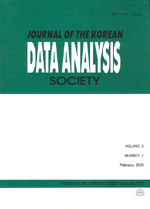스트레스 테스트를 통한 우리나라의 금융시스템 안정성 분석
Testing Stability of Korean Financial Market Applying Stress Test
- 한국자료분석학회
- Journal of The Korean Data Analysis Society (JKDAS)
- Vol.10 No.6
-
2008.123287 - 3301 (15 pages)
- 53

본 연구는 금융시스템 스트레스 테스트를 통하여 우리나라 금융시스템의 안정성을 살펴보았다. 이를 위해 Wilson(1997a, 1997b)이 이론적 기초를 제안하고, McKinsey사에서 개발한 Credit- PortfolioView 모형을 이용하여 다양한 거시경제 충격에 따른 신용손실의 동태적 움직임을 추정하였다. 분석결과, 향후 1년간 우리나라 일반은행은 경기하락, 주가하락, 이자율상승, 환율변동 등의 다양한 충격에 대하여 BIS 자기자본비율을 8% 이상 유지할 수 있는 것으로 나타나 자기자본을 통해 이들 손실을 비교적 충분히 흡수할 수 있는 것으로 나타났다. 또한 우리나라의 금융시스템의 스트레스 테스트 결과, 개별 거시경제충격에 대하여 위기 발생 후 3년까지는 상대적으로 안정적인 수준으로 나타나 일반은행이 자체 능력으로 상당 수준의 거시경제충격을 흡수할 수 있는 것으로 보인다. 다만, 1998년과 같은 금융위기가 다시 발생하고 이에 따른 거시경제 변수가 3년간 회복되지 않을 경우 금융시스템의 안정성은 위협받는 것으로 나타났다.
The purpose of this study is to verify the usefulness of stress-testing introduced as a financial stabilization model. We apply CreditPortfolioView Model, which is proposed by Wilson(1997 a, b). and widely used by McKinsey co. We dynamically estimate the credit loss related to the length of time a loan portfolio is held, reflecting the correlations among macroeconomic shocks. We also Monte Carlo simulation analysis to estimate the loss probability. The approach of stress tests could help individual banks and financial supervisory authorities estimating how much additional capital they should have in order to absorb any exceptional but plausible macroeconomic shocks. According to the analysis result, our country s financial system is at the very proper level in terms of stability and the bank itself is able to absorb the reasonable amount of shocks.
1. 서론
2. 스트레스 테스트의 선행연구 및 방법론
3. 자료 및 추정결과
4. 결론
참고문헌
(0)
(0)